There’s a new reason for buying an old car. It’s not nostalgia, it’s not a love for classic lines – though those still come along for the ride. It’s a desire to drive something without all the stuff new cars come with.
To be free of the hassle, expense and Big Brotherism of new cars – which for many of us has passed an Event Horizon of tolerableness. Enough. There’s got to be some kind of way out of here.
And, there is.
Old cars – the really ancient ones, those built before the early-1980s – do not have computers or fuel injection or air bags or back-up cameras. They do not noise-torture you with buzzers if you elect not to buckle up for saaaaaaafety. You can turn the headlights off – and the engine doesn’t shut off unless you shut it off.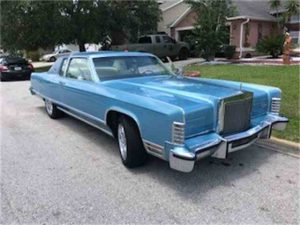
There is no Event Data Recorder to keep track of what you do behind the wheel; no serial idiot-proofing technology to control what you do behind the wheel.
The drivetrain is mechanical and not Borg’d by electronics that are baffling even to engineers and which sometimes require specific, very expensive diagnostic machines and tools to deal with. Most service work can be done by the owner, with very basic hand tools.
In this way, pre-‘early ‘80s cars are like soda with real sugar and grass-fed beef vs. high fructose corn syrup and . . . corn-fed, clogs-your-pipes beef.
But pre-early ‘80s cars have their issues, too.
First and foremost – they are not idiot-proofed.
Be aware that a car without anti-lock brakes (ABS) will become uncontrollable if you slam on the brakes, because that will usually lock up the brakes. Which, in turn, locks up the steering.
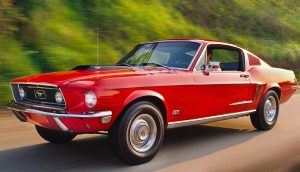
The car will skid in the direction it was going and you will lose the ability to steer in another direction unless you let off the brakes – something that’s counterintuitive as well as no longer taught because with ABS-equipped cars, it’s not necessary. You just slam on the brakes and the ABS system prevents the brakes from locking up by automatically releasing pressure just before they do lock up.
In the pre-ABS days, new drivers were taught the skill of threshold braking – or at least, had heard about it. The idea was to manually do what ABS does automatically: Apply and release braking pressure to slow the car without losing the ability to steer the car. If you buy a car without ABS, it is wise policy to practice this skill so that it becomes automatic, in the event you ever have to slam on the brakes.
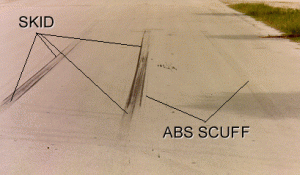
You should also become acquainted with stopping distances – and increase your following distances – because older cars not only haven’t got ABS, they generally have mediocre brakes (relative to new cars) and take longer to stop, especially if they need to do it in a hurry.
The same applies with regard to wheel slip during acceleration. Traction and Stability control are things cars didn’t have before the ‘80s (and it wasn’t common until the ‘90s). This means that if you floor the accelerator pedal and the car has the power to do it, the powered wheels (usually, it will be the rear wheels, if it’s a pre-1980s car) will break traction. “Traction control” in such a car means easing off the gas just enough to maintain control of the car and avoid going sideways beyond the point of recovery.
This, too, is a skill that takes time and experience to acquire.
Those who grew up with cars that don’t require such skills can get into trouble quickly. If you’ve never driven a car without traction control and stability control, be very careful the first time you do drive one that hasn’t got these safety nets. If you are not familiar with the the power/performance capability of the car, ease into it very gradually – until you know what the vehicle’s grip limits are before you actually reach them. And how the car will behave once you do reach them.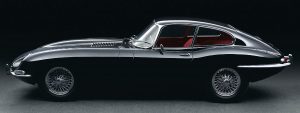
Because maintaining control will be your job. Remember: no electronic safety net.
Driving an older car requires more skill and attention. This can be more demanding – but it’s also more rewarding.
The other thing to know about old cars before you buy one is that while they are simpler and more DIY-friendly, they are also more finicky. And more maintenance-needy.
In a modern car – any car built since the ’80s – you simply turn the key (or push the “start” button) and the engine . . . starts. You can drive away right away.
In a car made before computer-controlled fuel injection came online, there is a starting procedure – and it varies from car to car. This is a function of these cars having carburetors – mechanical devices that have chokes to richen up the air-fuel mixture at cold start – and which take a little time to warm up before you can drive them away smoothly.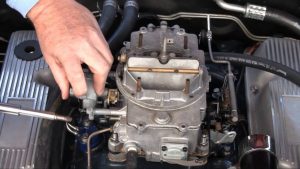
In general, you must pump the accelerator to set the choke (if it has an automatic choke; some of the older cars require that the choke be set manually, by pulling a knob that pulls on a cable) and spray a spritz of fuel into the engine – and then turn the key to engage the starter. If you don’t follow procedure – if you just turn the key as you would with a modern car – the engine probably won’t start.
If it does start, the engine will initially idle at a fairly high RPM – fast idle – until it warms up enough to release the choke. It is a good idea to let the engine run until the idle stabilizes and you can release the choke – usually done by a quick stab of the accelerator pedal, if the car has an automatic/thermostatically controlled clutch.
If you try to just drive off, the car may surge forward – due to the fast idle – or stall out, because it’s not yet warmed up enough.
New cars are less fussy – but they have much less personality. Anyone can drive a new car. It takes some knowledge to drive an old car!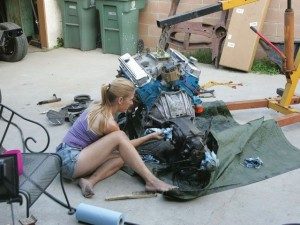
Finally, there is the issue of maintenance. Old cars do need more – and more frequently. Things like minor adjustment of the carburetor and ignition (timing, point gap) and new spark plugs more like every 20,000 miles vs. every 50,000 or 100,000-plus miles, as with a modern car.
But, these more frequently necessary minor tweaks do not require the services of an expensive dealership or expensive diagnostic equipment. Older cars can be kept in tune by almost anyone willing to learn a few basics and acquire some basic hand tools. You’ll get your fingers dirty, but your wallet will be fatter – and you’ll have the satisfaction of being able to fix your car yourself, most of the time.
And that’s something you can’t put a price on!
. . .
Got a question about cars – or anything else? Click on the “ask Eric” link and send ’em in!
If you like what you’ve found here, please consider supporting EPautos.
We depend on you to keep the wheels turning!
Our donate button is here.
If you prefer not to use PayPal, our mailing address is:
EPautos
721 Hummingbird Lane SE
Copper Hill, VA 24079
PS: EPautos stickers are free to those who send in $20 or more to support the site. Also, the eBook – free! – is available. Click here. Just enter you email in the box on the top of the main page and we’ll email you a copy instantly!


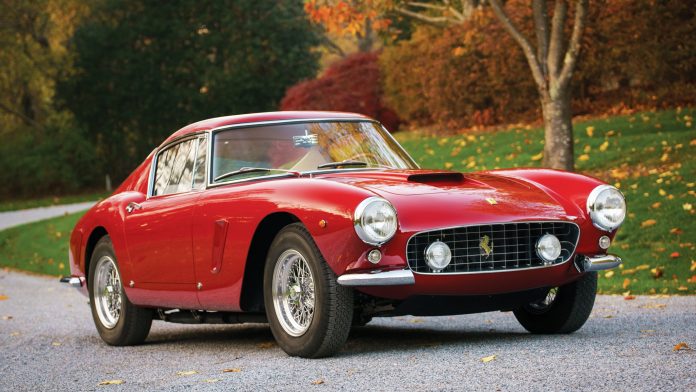

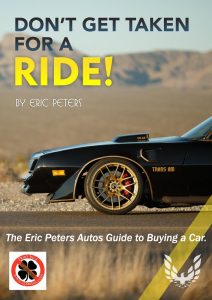







I grew up driving an 83 Olds 88 that I bought at 14 and built myself. It’s a quirky thing, but I love it. It’s been in storage for the past decade or so. my last 3 cars were, in order, a 99 Cherokee, an 04 Grand Cherokee, and my current car, an ’11 Subaru Outback.
I got the Cherokee because, having come from a long family of Jeep owners, I wanted something that was stone simple. Yes, it had airbags and EFI, but the engine was designed in the early 60s by AMC, the solid axles were easy to repair, and the transmission was bulletproof. At 188k miles, it ran like new, and I loved it. Went from there to an 04 GC. That was a huge POS. I thought it would be similar. Nope. Chrysler was too smart by half with that thing and its evil 4.7L.
So, I traded it in. I wanted something as close to a new-old car as possible. Easy to fix, simple to maintain, cheap to own, and stone reliable, while not having too many nannies and whizbangs. Still had to have 4WD though, as I live in Northern Indiana and lake-effect snow is a thing. So, base model Outback. Everything you need to do on this can be accomplished with a ratchet set and box end wrenches. 165k miles in, and nothing beyond maintenance.
If I didn’t live in the rust belt, I’d be driving a little old econocar though – like an early 60s Falcon. I just don’t want to subject something that’s actually worth something to the winters around here.
Good luck with your outback. I had a 10 legacy that cost me a ton in repairs. CVT transmission valve body, multple replacements of the struts and mounts, control arms and sway links because of suspension noise, AC compressor, and other items made me sell the car and replace it with a 2003 Lexus ES300. True, the Subaru was easy to work on. I wrenched on it many times, but I just couldn’t take driving the shit box anymore. Note: If you want to give the car better cornering, replace your FSB with one from a 2013 or later. They are interchangable. That made the car handle like a BMW. No more washed out front end around corners. Replace the rear 16mm unit with a 19mm and you have a race car.
Good lord!
I bought mine as a former fleet car from a dealer. It had 50k miles on it and had just had all the fluids and tires replaced.
In the first yearn I put 50k miles on it without a hiccup. It tows a 5×8 trailer fine, and I’ve used it to move most of a household across the state. It’s been coast to coast, and hasn’t ever let me down. One of my wheelbearing died on me this last year, so I replaced all 4. Timing belt and water pump way too late at 120k. It still had the writing on it.
Frankly the only two issues it has are that it uses about 1/2 qt of oil every 7000 milesnn and a rock took out my a.c. condenser, which isn’t the car’s fault.
Sorry you had such luck with yours but at this point I can genuinely see driving this til the wheels fall off, then buying another Subaru . Perhaps that time a forester with a manual trans.
For whatever reason major class-action lawsuits involving Subaru have gone under- reported. One was for excessive oil consumption and another for crankshaft failure in the Boxer engine.
Subaru has been acting like the GM I knew in denying the problems and refusing to repair – hence the lawsuits.
The worst things are age related issues.
Decaying rubber. Rust. So on and so forth.
They never really end unless the whole car is taken apart and built back up with new.
On my 1999 Ford Ranger 4×4 I bought new in 1999, Ford bothered to use galvanized body panels. Due to this and my annual undercoatings of bar and chain oil the Ranger has not yet succumbed to Calcium Chloride – what I now call “Ranger Rotter”. They spray this stuff on the roads like it is going out of style. Zero Tolerance they call it. Such a sad sight to see collapsing truck beds and dipping truck frames.
Many deletions of the worst things “ranger” have occurred during the ranger’s life Ford’s awful pulse vacuum/electronic 4×4 system was the first problem to address. I don’t know if “The Shiftster” is still available but it was well worth it as a replacement for the transfer case shift motor. A set of manual locking hubs from Rugged Ridge work fine too.
My a/c system still worked well when I pulled it and installed a bypass pulley. I don’t miss a/c.
At 18 years old the ranger is better than ever.
I drive a 67 c10.Manual drum brakes, 3 on the tree and manual steering. Pull the choke and step on the gas twice and she fires up everytime. Only update was replacing the points with plextronics. Never have issues with the one barrel carb.
I also ride my 96 road king with a carb. These are my daily drivers during the spring till fall months.
My 92 silverado tbi is my winter and highway driver. All three are reliable and affordable to maintain with basic tools
I have a 1970 F250 factory highboy 4×4 that will I will never part with. I’ve been through it from one end to the other having rebuilt the entire drivetrain. I know it inside and out. It’s my third F series truck from that era, so I’m very familiar with them. I get tires mounted on it and I’ve had it in to get an alignment, everything else I do myself.
I also have a 2002 Honda Superhawk. Carburetors, no ABS, no traction control, no computer. I do all my own work on it as well. I actually have to have a certain level of competence to operate both vehicles.
I will take our 16 year old 4Runner, 22 year old Corolla and 24 year old F250 7.3L diesel over these new cars and trucks any day of the week!!
I kinda think the sweet spot for “old” cars is around mid 90’s to early 2000’s. When they have the reliability of FI and electronic ignition but not as much mandated “safety” crap. After that time period most of them have proprietary OBD crap, direct injection, more weight, etc.
Earlier than that generation and you’re starting to deal with less ignition reliability without maintenance , fuel lines that aren’t made to deal with ethanol crap, carb maintenance, etc.(model dependent of course). Although in fairness, Petronix style distributor replacements aren’t bad anymore and aftermarket TBI systems are getting better.
Don’t get me wrong, I love older cars- their lines and uniqueness, their simplicity, etc. But for daily driving a mid 90’s vintage low mileage car has great “bang for your buck” with less upfront work required.
I really like that era also. I drove the older cars when I was younger, of course, and there really were some great improvements. I now drive a 99 DeVille. I had a 96 DeVille before it, and liked it so much that I bought a similar car when I needed another (blown trans). I did not figure the trans was worth swapping. I just don’t have the time for the repairs an older car would need. I like the power, and it is still a big car, and does not have all the WIFI stuff yet. It can’t be hacked. It does have one of the modern problems, though – a governor. And it is computerized, so I don’t know how it can be disabled.
Yeah, the 90’s cars had absurdly low governed top ends. By the mid 2000’s, the governor settings were becoming more reasonable.
Hi Jim,
It’s generally possible to reprogram the ECU to allow higher speeds; there are aftermarket companies that cater to specific makes and models in re this.
I believe it’s Holley that now has a stand alone TBI that “learns”, the first of its kind. Don’t know anyone to use it but it would seem to be the perfect set-up for an older, carbed vehicle…..which is basically what it’s for. For extra money you can get it with HP ratings into the several hundred, don’t recall the absolute top HP rating.
While I have always been a Qjet kinda guy I once tried a Holley Economiser that consumed prodigious amounts of gas, not miserly in any way except to keep you broke.
I remember when Chevy went to TBI, a nice boost in power and economy( back when the trucks were a nice size and package) those early and mid ninety trucks were nice plus another good little surprise when they brought out the “Vortec” 5.7 .
Just have to point out that you can usually buy a nice driver restomod with the hard work already done for 10-20k around here at least. Compared to 25-30k for a new computer on wheels, which will depreciate hard and fast as long as you own it, that is a pretty good deal. The enemy here is road salt. Which is why I have a bunch of good old cars fo May thru October, and a modern beater for salt season.
I had a ’96 Subaru wagon with ABS. Every damn winter, at least once, that damn thing would kick in precisely when I needed it the least, and got me in more potential trouble than I was already in. I finally got the goddamn thing thing disabled the next time I needed from front axle work. People don’t realize that there are a lot of these “safety” things, even in states that require annual “inspection” (total scam), that you can legally turn off.
I pulled the ABS sensor fuse on my Volvo for similar reasons and my old GMC van was an early generation rear ABS only setup that hasn’t worked for some time(thankfully). Though I’m not so sure I’m not dealing with some rear drum slave cylinder issues as a result of it’s dying gasp the last time I had to do some hard braking.(I’ll be getting around to checking it out further later this month when I have time)
I recently saw a 77 Nova just like my second car and it got me thinking about how I ended up learning about cars. I didn’t know squat and I was paranoid about every click and clatter that I imagined I heard, so to get past my ignorance, I bought a second car…a ’62 Chevy II…to tear apart and put back together. The experience made me confident enough that I sold the ’77 and drove the ’62 for several years. I dealt with blown out tires, broken shocks, cold air rushing through the kick vents in below zero conditions, rotted radiator, funky brakes (never did get them right), but I never felt overwhelmed by the troubles because I understood its quirks and KNEW how to fix everything. Today, when the ’08 Volkswagen won’t start, it’s a call to AAA and a trip to the dealer, and a thousand dollar bill. Talk about feeling insecure.
Ron, I once used a ’70 Plymouth Fury III as a daily driver for about 6 years before wrecking it. It was a 2dr automatic with a floor shift console and a 440 under the hood. It was a big heavy car, but I never had an issue of pulling out in traffic and wondering if I could get up to speed before the semi behind me ran me over, as is the case with my Sebring. It was finicky at times in certain respects, but I wished I had it back in a lot of ways. I would only drive it sparingly to protect it and keep it around in case I really needed a car. My 05 Sebring has been a really good car, but I worry that if something breaks, it will cost me a small fortune to fix.
Let Me tell you about a Nova that bit, My Brother bought a 67 Impala 427 SS off of a Guy that finally decided to part with it- there was only one problem the Impala turned into a donor car for a Nova, that a guy for some reason or the other put the 427 in a Nova, then subsequently wrecked the Nova.
Now as to what happened to the venerable 427, I was told it laid around in the weeds and finally got carted to the recycler, sob, gasp. Thats not the end of the story, Brother dear found a 66 Caprice 2 dr HT, factory air, Lear jet factory 8 track, turbo Hydramatic, Delco factory air, now take a guess as to what happened to it, give up? The 360 HP 396 was ripped out and stuffed in the 67 Impala SS, went pretty good, ruined the collector value of the car.The complete Caprice got hauled to the dump, somebody finally bought the Impala.
Brother was actually able to find the (by now) basket case Impala and for some strange reason gave a lucky chump a couple of grand for the remains(old memories die hard) and it sets in the barn collecting Bird droppings( nephew and I considered making a “Zombie ” hunting mobile out of it) and brother bought another 2 DR HT impala, He finally found a 454( redone to a 460) and used the motor in a snow push truck for a while( plenty of torque in that one) plucked it out and now it is ready to be installed in the 67, we will see how that goes . Just saying ‘ I think I would have approached the whole deal a little differently.
I remember the junk I used to drive, no thanks, on the 99 Nissan Pickup though, the 4 wheel ABS made it almost impossible to stop when it was slick.We usually had Fords that would start before you could turn loose of the key, the old 59 Chevy had a draggy starter that made it almost impossible to start when it was hot.
Liked the interior of the 59, didn’t like the taillights and all the junk on the front end( always wanted a 60 model 2 dr convertible, with a .120 over bored 283)
Fortunately, common sense prevails and I am not rich enough to spend all my money on an old vehicle, I just get in the buzz mobiles and head out ( only thing I have to do to them is change oil and plugs sometimes and air filter .) What I miss is the metal grills and trim and the glass headlights.
Great article Eric… defines the conundrum – old or new. It took a while, but I decided to unload all the old (GM) and purchase all 2012s (Japanese), for the duration. All purchases were V6s, and faster, more fuel efficient, with superior (ABS) brakes, than the old V8s.
Other reasons for buying 2012s – No: auto-stop/start, direct injection, cylinder deactivation, turbos, 10-speed trannies, 4-cylinders.
The 2012’s are better in every respect, save “nostalgia”. No troubles with any of the three. If they only last 10 years, it’s worth it – I got tired of correcting (wrenching) GM’s engineering defects.
It is strange that all the imports were better performing and late to adding all of uncle scam’s garbage features and spying devices. My old 06 hyundai tucson had a tape player when other NAFTA made vehicles had mp3 hookups and the like.
IMO new cars are better than old cars in almost every way. But wouldn’t it be nice to be able to choose to use certain systems especially the Big Brother systems of new cars? I am not talking about hacking the system but having the ability to “turn off” a system like turning off the stereo built into the vehicle. Or the manufacturer giving the customer the option to eliminate such systems from the vehicle at time of purchase.
Hi Alex,
I’d argue that cars made circa early 1990s-early 2000s represent the apotheosis of car design, in terms of cost-benefit, reliability and durability. The really good news, though, is that one can upgrade the older cars to be like these cars fairly easily. Not everything translates – the older cars are still much more prone to rust – but it’s fairly easy to make a ’70s or ’60s-era car as everyday driveable and reliable as a ’90s-early 2000s model car.
I know – because I’ve done it!
I like the idea of refurbishing and upgrading older vehicles but that is not how I want to spend my time and assume it is pretty costly to purchase one that has already had the work done to it.
Hi Alex,
Not necessarily. If you begin with a vehicle in good condition, a few relatively minor upgrades makes all the difference. The two big ones, in my opinion, are replacing a points-type distributor with an electronic one and replacing a non-overdrive transmission with a transmission that does have OD. These two upgrades will make an older car feel/drive very much like a modern one and don’t cost a fortune and are well within the capabilities of a competent DIY mechanic.
I suspect interest in this will increase as new cars grow ever more expensive to buy and maintain.
Eric, the overdrive transmission sounds like it is probably a good upgrade, and I might do that on the two cars I have, a 70 Challenger and 72 GranTorino, at some point. But, I am thinking the ignition points might stay on the Torino for the simple reason that they are EMP proof. I do not know how worried, exactly, a person should be of such an issue, but I think it is worth considering.
Just don’t throw away the old distributor and carb. Just in case.
I wouldn’t worry too much about the EMP thingy, because there is going to be a gas shortage as soon as something like that hatches ( Maybe squirrel away a couple hundred gallons of ethanol free, with fuel stabilizer, now you will be set when you pull the old electronics out of the old microwave)
Strangest dang things happen in cyberspace, lets get us some homebrew bio-diesel with air starters( anything with electric wires can be affected, in the late 19th century the fargin steel rails got hot enough to ignite the crossties( a big EMP is not going to be fun-what will happen to those people with electronics planted in their chests?)
Here is a pretty good video about the dangers of something similar to a Carrington Event to our current technological world. Including how Earths magnetic field has weakened making us more susceptible CME’s and other “space weather”: https://www.youtube.com/watch?time_continue=66&v=VVgUZv9ccyQ
Would you say we are perhaps living in a”fools paradise “?
Fools paradise is a good way to put it. Very very few if any are prepared for (most are not even aware of) the disaster our star (not could) will hit us with.
Geophysicist Robert Schoch has postulated that the end of the last ice age was caused by massive solar output. Schoch even theorizes that the high levels of radiation may have affected mental and psychical abilities of humans; that humans used to be more mentally advanced than we are now.
Perhaps that is why we would have a hard time moving and creating megalithic structures now’
The absurd notion that the pyramids were built in the time frame postulated , with gangs of Egyptians using ropes and logs , is well, absurd.
Eric, can you get an upvote system?(some of these Guys are really deserving.)
“I’d argue that cars made circa early 1990s-early 2000s represent the apotheosis of car design”
I agree 100%!
Apparently I agree. I just decided not to purchase a new truck and hang on to my 2004 GMC Sierra 2500 Diesel.
There are a few reasons I did not take the plunge. One being I drive into Mexico on a regular basis and the new emissions on the diesels (not that I am married to diesel rigs) are incomparable with the fuel in Mexico.
I also found the shopping experience to be less than customer friendly. Auto makers like to offer packages. I found that I could not get what I wanted in the packages offered. I may eventually special order a vehicle.
My Chevelle had the automatic choke. Give it a kick in the morning, and most of the time it was good all day, it didn’t need to be reset unless the car hadn’t run for more then 8-9 hours. I don’t remember a time it wouldn’t start, no matter how cold it was. Didn’t have to deal with the carb all that much it seemed, and a screwdriver fixed most problems on the road if it acted up. It really wasn’t that much of a big deal.
The brakes could be scary though. Modern cars, even ones without ABS are so much better.
Hi Rich,
If your Chevelle had the Quadrajet (as my TA does) I have no doubt about any of that. The QJet is a great carb – almost as precise a fuel metering device as FI, with excellent cold-start and transition characteristics. My TA always starts right up. Crisp throttle response, no bog as the secondaries open.
The main weakness of this carb, in a high-performance context, is the small fuel bowl. The solution is to add a high-flow inlet and jigger the float level until you get it exactly right, which does take some tuning time.
But the sound of the secondaries opening is worth it!
I once worked at a major manufacturing plant. Early mornings, esp. cold weather, and midnight shift hit the parking lot at the same time. I could listen to the cars cranking and tell you the maker by the way they started. Every GM started and ran on high idle instantly. The rest were variations on crank and fire and die. Those old Holley 2 barrels that looked like the back half had been cut off a four barrel that Ford’s had would fire and die over and over. That’s hell on everything including the owners. Now and then you’d hear one backfire through the carb….uh oh, gonna be going to the shop if it will start.
I used to have a friend I’d meet on the dirt road mostly and we’d stop and bs. When we’d get ready to go we’d both turn our ignition on and his SBC and my BBC would fire instantly. He’d always say “Damn Chevy’s, just won’t start” and we’d laugh and tear off. Didn’t matter what that Q Jet was on it was gonna start immediately.
ABS brakes are a horrible invention. It encourages lazy driving habits – along with the rest of the saaaaafety “features”. Although, they do come in handy occasionally, but are relied upon far too often.
I cut my teeth on a ’70 Impala and a ’76 Buick Regal (heavy beast, that one). However, we had an abandoned airstrip nearby where you could practice in the worst snowy and icy conditions – you learned exactly what that car would do in any situation (at speed).
Everybody should have to learn on a rear-drive vehicle without ABS (preferably in the snow). Then, they should also have the ABS disabled on their everyday vehicle once in a while, just to keep people actually paying attention to driving (unlike what we see on the roads today).
Probably ABS is the one thing that does save lives. Most people check a tire when it’s flat and radials get some really wild skids going with varying pressure, much more than old bias ply tires did. ABS helps in that respect. I finally realized long ago it’s just too much to ask some people to learn how to properly drive.
How the hell do you pay attention with all those calls and texts coming in? The fact that every new vehicle I’ve been in for the last several years bluetooths with a cell phone has probably saved lots of lives as has the feature on phones that read out texts and reply with your voice turned into text. You say you don’t need it? Well, from what I’ve seen 90% of people under the age of 60 need it badly. You used to see people singing in their cars but now they’re talking….and texting. I say it’s a good thing. Anything to keep their eyes on the road. I can tell you from experience you can’t drive a big rig and use a phone and I don’t try. Yesterday I left my headset in the pickup and I “had” to pull over and stop to use my phone. I was going really slow but that doesn’t work. I got run over from behind in my truck by another driver in another truck 3 years ago. I don’t want to repeat that. He got out with his earbuds dangling so no telling what he’d been doing. He only had a half mile to slow down with all the signs and rub strips and flashing lights denoting a stopping zone for construction and still ran over me. I was lucky he didn’t kill me.
Not all ABS’s are equal. Some work better than others. In my experience there is more braking force remaining after some ABS’s come into effect. Other than disabling the ABS there is no way to prove a driver is more capable than the ABS, so it is my opinion based on experience and feel that I can break harder without lockup than the ABS allows.
I have decades of operating performance vehicles in both competition and training. Most of this is on two wheels where lockup can be more critical. In order to reduce lap times one of the most important skills to master is trail breaking. This has taught me to modulate the brakes manually more efficiently than a computer.
ABS and similar technologies are overall a good thing for safety. Almost all people controlling vehicles on the roads do not have the training and experience to perform better than ABS’s and similar technology on todays vehicles. Human performance is less consistent than properly operating technology. Also, human performance advances at a much slower rate and has less capacity compared to technology.
Hi Alex,
Everything you’ve written is, of course, absolutely correct. My riposte, though, is that the deployment of all this technology has made drivers (on average) proportionately worse because less and less is being expected of them in terms of skill and judgment. I will always maintain that anyone who grew up learning to drive in (as an example) an old F100 pick-up with three on the tree and no power steering and drum brakes all around is almost automatically a better driver than 95 percent of the people learning to drive today in (as an example) an automatic Camry.
I agree. Driver skills would likely be higher in a Private Property Society (PPS) where owners of roads required better skills than the state does in order to operate vehicles on their property. This may be somewhat dictated by the property owners insurance carrier.
Maybe one of the requirements you can make to drive on your roads is to pass a driving test in a old F100. But I think vehicle handling skills are less important on most roads than is awareness and understanding the situation and how to handle it (especially busy roads,).
I car pool with a co-worker who drives a late subaru outback that has beeps and whistles for lane departure as well as idiot proof brakes. It almost seems Eric was right that the more driver coddling the less attention is paid as he is constantly fidgeting with the touch screen devices, texting, or relying on the auto brake feature to brake for him so he does more dangerous lane merges.
The coupe that was as long as an F-150 (longer) and could tow an Airstream.
http://storm.oldcarmanualproject.com/chevrolet/trailering/1973/01.jpg
A common thing back in the 60’s and 70’s was towing the cattle trailer to the Saturday sale, dropping it and letting the women go to town to shop. A lot of window shopping was done till the results were in on cattle.
Deuce and a quarter”s, 88’s, and all the other big GM’s were common at this chore…..and handled it better than the pickups with less engine and less rear end weight.
You forgot to mention the joy of front drum brakes, not to mention non-power front drum brakes! Um, heavy front ends, combined with very light rear ends, lack of precision rack and pinion steering, rarity of factory anti-sway bars, AM/8-track radios, biased-ply tires. One thing I really miss though…..the gas filler behind the rear license plate on GMs up until the last RWD in about 86 or 87. No fighting over what side of the gas pump you were on, or couldn’t get to! I miss the GM Windshield antennae, too! FM Converters for your AM radio, Independent sets of lap belts and shoulder belts! Steering boxes you could wind up like a clock-spring, and let the wheel free-spin back to keep going straight after sliding sideways around a corner! Um….I didn’t say that,
I would never do a thing like that, now, hehe. Engine bays so large you remove nearly any major engine component, with removing anything else! Hard-top Sedans with no center posts! Real Steeel bumpers! Oh, Eric, the list might be damn near endless!
Oh, I guess I remember some rather cool things there after all, huh? I DON’T MISS flooded carbs and fouled plugs, burnt points with chewed up flat-blade set screws. Rigid Steel fan blades that turned into catapults for tools, usually conveniently caught by the radiator, lol! Fifteen different bolts you had to loosen to remove and replace 3 or 4 V-Drive belts, Coil springs that were just waiting to kill you when you had to change a ball joint or service a king-pin, Headlights so dim you carried a hand-held flood light to see better, Manual foot vents that filled with leaves and dirt until a heavy rain got your floorboards wet, Steering wheels that cracked all over after about 5 years of sun and heat (although I do miss the horn buttons on the ends of the wheel spokes). Shutting the trunk and blowing out your high-dollar coaxial speakers!
I loved the kick panel vents but they were a must in Texas ifn’ you didn’t have a/c. I’d like them still. Open those and get fresh air when the weather is right and no wind noise or open window. I’m still doing a slow burn they removed cowl vents from big trucks…..idiots.
I don’t miss tightening the power steering belt, then the alternator belt and finally the compressor belt.
Two things GM had I loved: the factory 8 track was killer back when the alternative was 2 tracks. Those power antennas and the badass stereo/CB that went with them. No tuning or bs involved, just pick up the mic and you had a radio that worked as well as nearly any of the custom installs. I liked the way you could set it to bring in CB and mute the stereo and back automatically. The rear bumper gas tank was a great thing…..easy to back in and get that pump some ass had blocked getting the pump next to it.
I had a ’55 Dodge 1/2ton, flathead six, three on the tree, and it had a cowl vent and two wing windows. I could get a breeze going without having my shoulder blade length hair blowing all over my face. I could also burn a fat doob on the way to wherever, and the cab didn’t smell like pot when I parked it with the windows down to keep the heat from building up too much while I was away from the truck.
Burn one in a new pickup and it will smell like pot for as long as you own the fucker.
I had a ’55 Custom Cab with a wrap-around back window, a Blue Flame six and a granny four speed. Open that cowl vent and kick panels and let the smoke begin. No doubt I smelled but the cab didn’t. Wasn’t much in the old cabs to hold the smell. Slick seat, metal everything else. You could always loosen the cap on the gas tank and that kept everybody away till you were back when you could twist the cap and go on. Of course back then everybody was huffing fags to the point they couldn’t smell anyway.
True, most people couldn’t smell anything but their own cigs, but that dope inspired worry was half the fun of getting high.
A guy I went to school with had several ’55 Chevies, one after another. His old man was the local body shop guy and would help him redo the cars he found. The last one he had, I really envied him for. It was a ’55 sedan delivery, and his Dad did a beautiful paint job on it.
Tragically, he and some of our classmates went out drinking and he let one of the guys drive. They crashed and he was killed. Anytime I see a ’55 Nomad or sedan delivery I remember that.
The ’57 station wagon my parents had was one of those bronze things, a really nice paint job I thought, still do. It was at the dealer getting something done and they loaned us a ’54 delivery, not as nice looking as the ’55 or so I thought back then but I liked it. It was a 3 on the tree and my mother hated it. We only had it a day or so. My mother was happy and I liked the delivery. I’ve always like the delivery’s but then again, my uncle had a new blue and white ’58 Nomad with a 348 that was a rocket or so we thought back then. Don’t know how much more chrome you coulda got on one than that. It was a looker. Another uncle had a black ’57 Chevy coupe that would run like stink, bought it off a mechanic who’d souped it up some.
What I liked about the SD design is the floor pan. The SD floor pan is flat from the tailgate to the front seatback, while the station wagon had a footwell for the rear seat. The Nomad was a two door in the wagon, but with windows and a rear seat, wasn’t it?
The SD was also a 2 door with rear side panels instead of windows. I’m a fan of PT Cruisers and I have wondered why they didn’t make a SD version.
I’ve seen a few custom made PT Cruiser SDs but a true SD would have had a longer wheelbase to accommodate a cargo area that was long enough to be useful.
The little Henry J SD was a popular choice for customization. I always thought that the small SD would have been useful for small businesses in cities for delivery of groceries, liquors and floral arrangements for retail shops as well as for parts delivery and millinery stock to sewing lofts.
Urban businesses are kind of nonexistent today, but in an earlier time……. well, no point in dwelling on a past that probably only existed in my imagination anyway. http://1.bp.blogspot.com/-K7BTrlralWA/TW1sjNj5ipI/AAAAAAAACPs/YNfXTGWO6aI/s1600/mann_powell4.jpg
The “easy lift” one piece tailgate on the SD looked better to me than the two piece Nomad gate. ’55 SDs look great as hot rods. Too bad I’ll probably never have one.
Some of of those things can be upgraded on old cars. Electronic ignition is easy and inexpensive to add. Adding disc brakes is not all that tough on most models. Electric fans and upgraded lighting can also be installed. (Just adding a relay harness to get full voltage to the lights can make a big difference.) It’s even possible to add fuel injection to replace that balky carburetor, but that’s an expensive and complex proposition.
Of course if you’re sufficiently well-heeled you can go full restomod. That’s much too rich for my blood though.